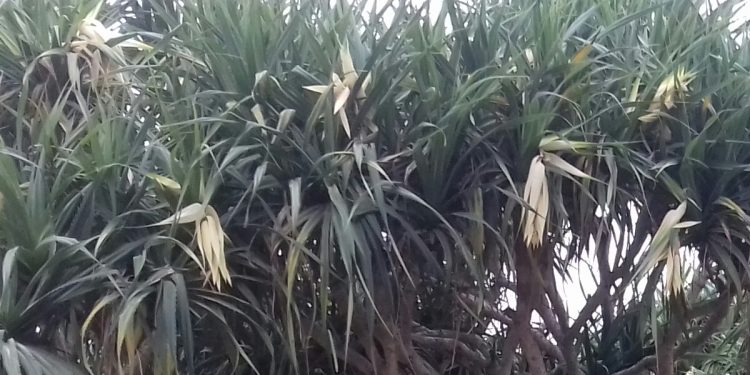Ganjam: Kewda flower plant, which is found in many coastal areas of the country, is considered a cash crop for farmers in Ganjam district.
The coastal areas of Ganjam district have the maximum concentration of Kewda forests in the country. Moreover, Kewda has also been cultivated here since ages as the flower is considered to be an asset for the farmers of this district.
Apart from the flower, other parts of the Kewda plant are also commercially exploited in the district.
Kewda is mainly grown in Chhatrapur, Chikiti, and Rangeilunda blocks, while it is also cultivated in Khallikote, Patrapur, and Kanishi blocks. Villages such as Kelua Palli, Indrakhi, Tulu, Chandanbadi, Golabandha, Sanapadar, Mananti, Bishwanathpur and Markandi are known for their large Kewda flower plantations.
The Kewda plant grows up to 4-6 metres in height. Lingraj Sahu, who grows Kewda flower in Indrakhi village, said that the plantation constitutes the lifeline for many farmers in various blocks of the district.
The Kewda plant blooms three times a year – between April to May, July to September, and December to February. The plant starts blooming when it is about five to seven years old. It is said that as the tree ages, it produces more flowers. An 18 to 20-year-old Kewda plant can produce around 40 flowers, while a plant aged between 30 and 40 years gives a yield of around 40 to 60 flowers.
The Kewda plant thrives well in the coastal sandy soil. Harvesters, or agents, collect the flowers and bring those to distillation units. Fresh and mature Kewda flowers are sold at prices ranging from Rs15 to 40 per flower.
The petals and the lower part of the Kewda flower are removed, and the filaments are separated before they are placed in large brass or copper vessels for distillation. The hot vapour through the flowers is passed through a paraffin filtration system, and, thereafter, through a low-temperature condensation system (roots) to extract the essence. About 15 to 20 milligrams of essence can be extracted from approximately one thousand flowers.
The high-quality essence collected from these flowers is sold at prices amounting to lakhs of rupees. One litre of Kewda flower essence usually fetches over Rs4 lakh in the international market. However, it is alleged that the farmers in Ganjam get anything between Rs10,000-15,000 as proceeds of sale of one litre of the essence.
There is a significant demand for Kewda flower essence in the international market. Annually, the Kewda flower trade generates around Rs50 -60 crore rupees. The essence is particularly used in the manufacturing of pan masala, zarda, sherbet, sweets, incense sticks, and medicinal products. The essence is sold to various states and countries, providing a good source of income to the farmers.
Noted social worker Natabar Sahu said there are around 170 to 180 Kewda flower distillation units in Ganjam district, benefiting around 5 lakh harvesters. There are about 1.5 lakh people involved in the trade.
Aju Nayak, a Kewda flower harvester, said that the industry in Berhampur has been adversely affected, particularly due to cyclones like Phailin which destroyed around 30 per cent of the Kewda forests in the coastal areas of Ganjam district. However, efforts to regenerate Kewda forests have provided a renewed source of livelihood to the harvesters. Training programmes have been conducted at regular intervals to examine the quality and requirements of the flowers. Despite this, there has been some dissatisfaction among the harvesters due to a perceived reduction in the support and incentives provided, he said.
The Odisha University of Agriculture and Technology (OUAT), along with other research institutions, has decided to provide technical assistance and encouragement to Kewda flower harvesters. However, these initiatives have not yet been fully implemented. Locals said if the necessary governmental incentives are provided, the harvesters would greatly benefit.
Apart from the Kewda essence business, some harvesters also make handicraft products such as baskets, mats, trays, and chairs from Kewda leaves, supplementing their income.
PNN






































